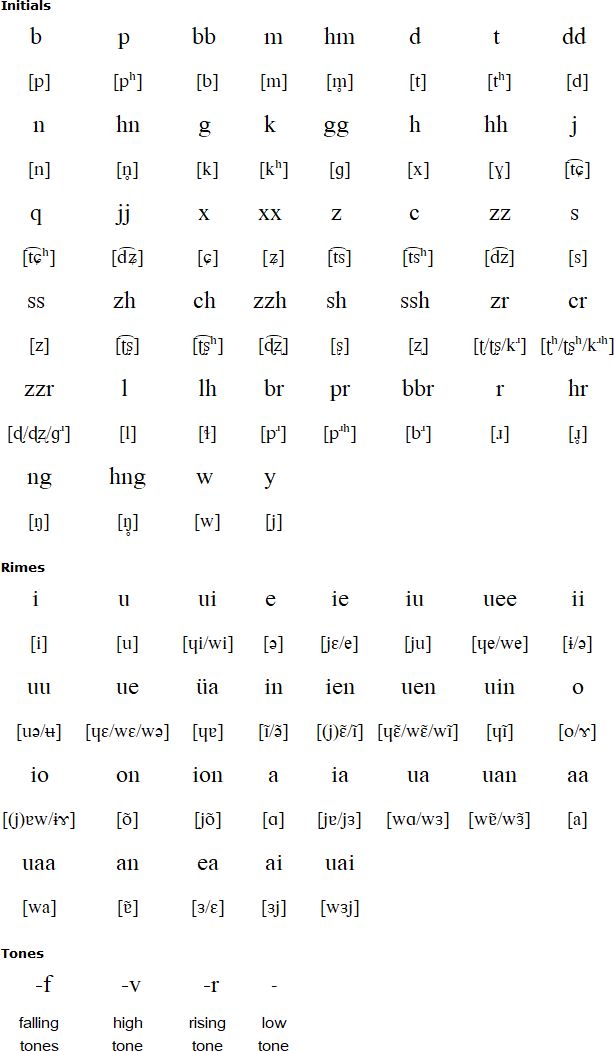Pumi is a member of the Qiangic branch of the Sino-Tibetan language family. It is spoken in southwestern China by about 77,000 people. There are two main varieties of Pumi: Northern Pumi and Southern Pumi, each of which has several dialects. They are not mutually intelligible. Some linguists further divide Pumi into Northern, Central and Western varieties.
Northern Pumi has about 55,000 speakers in Muli, Yanyuan and Jiulong counties in Sichuan Province, and in Ninglang County in Yunnan Province. It is also known as Ch’rame, P’rome, P’umi, P’ömi, Pimi, Primmi or Pruumi.
Southern Pumi is spoken by about 22,000 people in Lanping, Ludian and Ninglang counties in Yunnan Province. It is also known as P’rome, P’umi, P’ömi, Pimi, Primmi, Prinmi or Pruumi.
Pumi can be written with the Latin alphabet using a spelling system based on Chinese pinyin.

Download an alphabet chart for Pumi (Excel)
Tèr gwéjè dzwán thèr phxèungphxàr sì.
Timitae llìnggwe zreungzrun stìng.
He has broken several hammers.
This man is crying and shouting all the time.
Information about Pumi
https://en.wikipedia.org/wiki/Pumi_language
https://www.ethnologue.com/language/pmi
https://www.ethnologue.com/language/pmj
A Grammar of Wadu Pumi (PDF)
Northern Qiang, Pumi, Southern Qiang, Tangut
Languages written with the Latin alphabet
Page created: 12.01.22 Last modified: 15.04.22
[top]
You can support this site by Buying Me A Coffee, and if you like what you see on this page, you can use the buttons below to share it with people you know.

If you like this site and find it useful, you can support it by making a donation via PayPal or Patreon, or by contributing in other ways. Omniglot is how I make my living.
Note: all links on this site to Amazon.com, Amazon.co.uk
and Amazon.fr
are affiliate links. This means I earn a commission if you click on any of them and buy something. So by clicking on these links you can help to support this site.
[top]